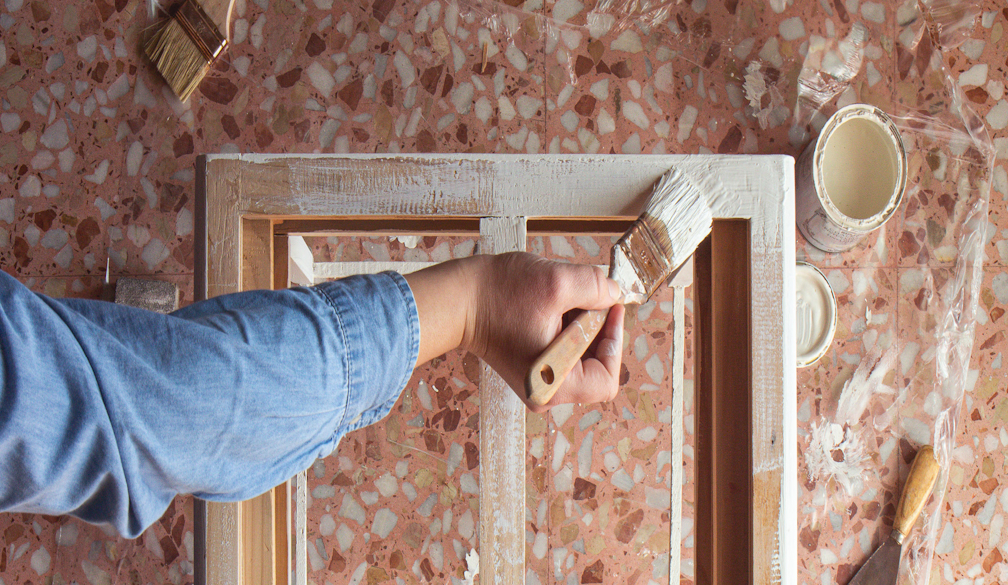How Much Primer Is Enough Primer

The new year is finally here and you want to switch things up. You look around the house and notice your living room walls have seen better days. Fired up with motivation and energy, you run to the closest paint store to grab yourself a brush and get a bucket of solid paint. And then, it hits you.
Flat? Eggshell? Texture? What about waterproofing? And what’s a primer…? You realise you have no idea what you need. Turns out, it’s not as simple as picking out a nice colour you like best. That scenario can happen to you as well if you skip this one extremely important step – preparation.
Surface Prep
You’re not the only one who’s not ready for painting from the get-go. The surfaces around your house are the same way. You could probably just about get away with it (or without it, to be more precise) in larger rooms, but in some places - it’s a must. And we simply can’t talk about surface prep without mentioning primer. Applying this product comes with a range of benefits and it’s also the last step that needs to be completed right before the actual painting. To answer your question – yes, a primer is necessary for most spaces. It improves adhesion and coverage, so you won’t need as much paint. Also, some paints actually come with a primer, which is unfortunately only good for painting over surfaces with paint already on them. Not an ideal solution, but good enough to work in many settings.
When It’s a Must
So, ideally, every surface needs some prepping. But there’s a catch - the process itself will be different depending on its type. Let’s take wood as an example. Even if you’re new to this, you probably know wood stain works pretty well for that purpose. While that’s true, sometimes you just want some colour on these surfaces, in which case you are most likely to use paint. The issue is that the unfinished wood is not exactly ideal as paint has a really hard time sticking to it. Some primer can take care of that. The same goes for drywall, as well as covering stains or even mould. One more thing – nowadays, we mostly use latex-based paints, but if your house has been around for some time, your old walls were probably painted with an oil-based product. One doesn’t stick well to the other. While stripping all the paint, cleaning the surface completely and starting over from scratch would be the best course of action, let’s be honest here – it’s not the most time-efficient one. That’s why you can simply use bonding primer to improve adhesion. That should do it.
One Coat, Two Coats
Now that we’ve established why and when to use it, let’s address the elephant in the room. How much primer do we actually need for our DIY project? Of course, we’ll be talking about general rules. There are so many different projects with specific factors that play a significant role, it’s pretty much impossible to have a general, foolproof formula for every single one. Be that as it may, if you need just a quick and subtle colour change, or you're painting a dark hue over a light one, then a single coat of primer will do the trick. Some of them are tinted, so it’s even easier to cover that light wall.
If you’re going the other way around, or want to paint unfinished wood, then two coats are a must. Drywall is no different, but in this case, it’s best to use a PVA primer for additional protection and durability. As convenient as it is, the new drywall is also a bit problematic since it’s sort of like a sponge. In that, it soaks up paint, which is obviously suboptimal. Two coats of primer and that shouldn’t be an issue anymore.
Don’t worry, we’re almost there. This is the last scenario, and if you’ve been paying attention so far, you know perfectly well what’s coming. Three coats. Now, truth be told, you may never need to go that far. If you see that two coats didn’t do an adequate job – just throw in an extra one. Also, when you’re working with some difficult surfaces, like masonry, plaster or some big stains on the ceiling, that third coat could make all the difference.
Not an Option
Look, we know that adding yet another product to your ever-growing shopping list full of paint supplies seems like an overkill. But trust us, primer is not a corner you should cut. You'll need less paint – and that’s where the real cost is. It makes your project, whatever it may be, more durable and let’s not forget - the finish is just so much better.



